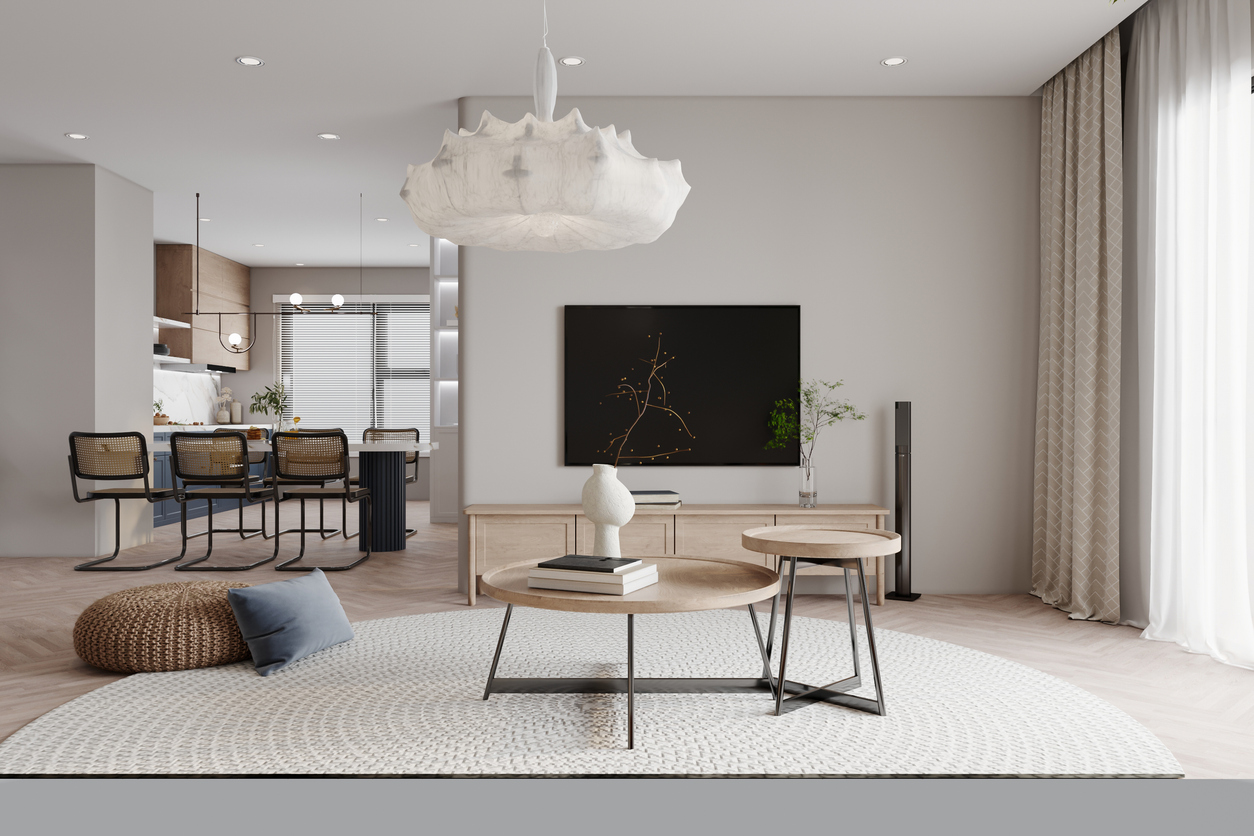
Minimalist living is more than just a trend—it’s a lifestyle that promotes simplicity, intentional living, and a clutter-free environment. By adopting a minimalist approach, you can reduce stress, increase focus, and create a more peaceful living space. If you’re ready to declutter and embrace minimalism, here are 10 practical tips to help you achieve a clutter-free home.
1. Start with a Clear Vision
Before you begin decluttering, take some time to visualize how you want your home to look and feel. Minimalism isn’t just about getting rid of things—it’s about creating a space that reflects your values and promotes a sense of calm.
How to get started:
- Walk through your home and identify areas that feel cluttered or overwhelming.
- Think about how you want each room to function and what items are essential for that purpose.
- Set specific goals for each space, whether it’s simplifying your wardrobe or creating a more serene living room.
Pro tip:
- Keep your vision in mind as you declutter, and use it as motivation when making tough decisions about what to keep or discard.
2. Declutter One Room at a Time
Decluttering your entire home can feel overwhelming, so start small by focusing on one room or area at a time. This method allows you to see progress without feeling burnt out, making the process more manageable.
How to approach it:
- Begin with a room that you use frequently, such as the bedroom or kitchen.
- Set aside a few hours to go through all the items in that space and decide what to keep, donate, or discard.
- Once one room is decluttered, move on to the next.
Pro tip:
- Take before-and-after photos of each room to track your progress and stay motivated.
3. Follow the “One In, One Out” Rule
To maintain a clutter-free home, it’s essential to prevent new clutter from building up. The “one in, one out” rule is a simple way to do this. For every new item you bring into your home, commit to getting rid of one existing item.
How to apply this rule:
- When you buy a new piece of clothing, donate or sell an old one that you no longer wear.
- If you receive a gift or purchase a new gadget, consider which similar item you can part with to keep your home balanced.
Pro tip:
- This rule can be especially helpful in managing clutter-prone areas like closets, kitchens, and living rooms.
4. Embrace Multi-Functional Furniture
In a minimalist home, less is more. Investing in multi-functional furniture allows you to reduce the number of items you need without sacrificing comfort or functionality.
Examples of multi-functional furniture:
- Storage ottomans: These provide extra seating while offering hidden storage for blankets or magazines.
- Sofa beds: Perfect for accommodating guests without needing a dedicated guest room.
- Foldable or stackable furniture: Chairs, tables, or beds that can be easily stored when not in use help free up space.
Pro tip:
- Look for furniture pieces that serve multiple purposes while maintaining a sleek, minimalist aesthetic.
5. Digitize Paperwork and Photos
Paper clutter is one of the most common sources of stress in a home. From old bills to stacks of photos, paper can accumulate quickly. Digitizing important documents and photos is a great way to eliminate unnecessary paper while keeping essential information organized and accessible.
How to digitize your items:
- Use a scanner or a smartphone app to create digital copies of bills, receipts, and important paperwork.
- Store digital photos in cloud-based services like Google Photos or external hard drives to reduce the need for physical photo albums.
- Shred or recycle unnecessary paper documents once they’ve been digitized.
Pro tip:
- Set aside time each month to scan and organize any new documents to prevent paper from piling up again.
6. Adopt a Capsule Wardrobe
A capsule wardrobe is a minimalist approach to fashion that focuses on owning a small collection of versatile, high-quality clothing items that you can mix and match. By reducing the number of clothes you own, you can simplify your morning routine and keep your closet clutter-free.
Steps to create a capsule wardrobe:
- Start by sorting through your current wardrobe and donating or selling items you no longer wear.
- Choose 30-40 staple pieces (e.g., jeans, neutral tops, a few pairs of shoes) that can be worn in various combinations.
- Focus on timeless, well-made pieces that suit your style and can be worn throughout the year.
Pro tip:
- Rotate your capsule wardrobe seasonally by storing off-season items to keep your closet tidy and functional year-round.
7. Create Designated Spaces for Everything
One of the keys to maintaining a clutter-free home is ensuring that everything has a designated space. When items don’t have a proper place, they’re more likely to end up cluttering surfaces or floors.
How to organize effectively:
- Use storage bins, baskets, or drawer dividers to create specific spaces for small items like keys, chargers, or office supplies.
- Assign a place for frequently used items, such as a hook for your keys by the door or a basket for mail.
- Regularly return items to their designated spaces after use to keep your home tidy.
Pro tip:
- Labeling storage containers or shelves can help everyone in your household know where things belong, reducing clutter over time.
8. Limit Decorations and Sentimental Items
While decorations and sentimental items can make a home feel personal and inviting, too many can create visual clutter. Minimalism encourages mindful choices about what to display and what to store away.
How to approach decorations:
- Select a few meaningful or aesthetically pleasing items to display in each room rather than filling surfaces with multiple decorations.
- Rotate sentimental items or seasonal décor instead of displaying everything at once.
Pro tip:
- Store sentimental items in a memory box or dedicated space where you can easily access them without cluttering your living space.
9. Declutter Regularly
Minimalist living isn’t a one-time project—it requires ongoing maintenance to keep clutter at bay. Regularly decluttering your home helps you stay organized and ensures that you only keep items that serve a purpose or bring you joy.
How to declutter regularly:
- Set aside time each month to go through areas prone to clutter, such as closets, drawers, and kitchen counters.
- Apply the “does it spark joy?” method from Marie Kondo, keeping only items that truly make you happy or are useful.
- Get rid of broken or unused items immediately to prevent them from piling up.
Pro tip:
- Use donation boxes to collect items you no longer need, and commit to donating or selling them once the box is full.
10. Embrace Minimalist Design Principles
Incorporating minimalist design principles into your home can enhance the feeling of space and tranquility. Focus on clean lines, neutral colors, and open spaces to create a calming environment.
Tips for minimalist design:
- Choose neutral or muted color palettes to create a sense of calm and openness.
- Use furniture with clean, simple lines to avoid visual clutter.
- Limit decorative items and focus on quality over quantity.
Pro tip:
- Let natural light in by keeping windows unobstructed, and use mirrors to make rooms feel more spacious.
Minimalist living is about more than just getting rid of clutter—it’s about creating a home that supports your values, reduces stress, and brings peace to your daily life. By following these 10 minimalist living tips, you can create a clutter-free environment that promotes a sense of calm, simplicity, and well-being. Whether you’re just starting your minimalist journey or looking to refine your space, these strategies will help you build a home that reflects a more intentional and mindful way of living.







